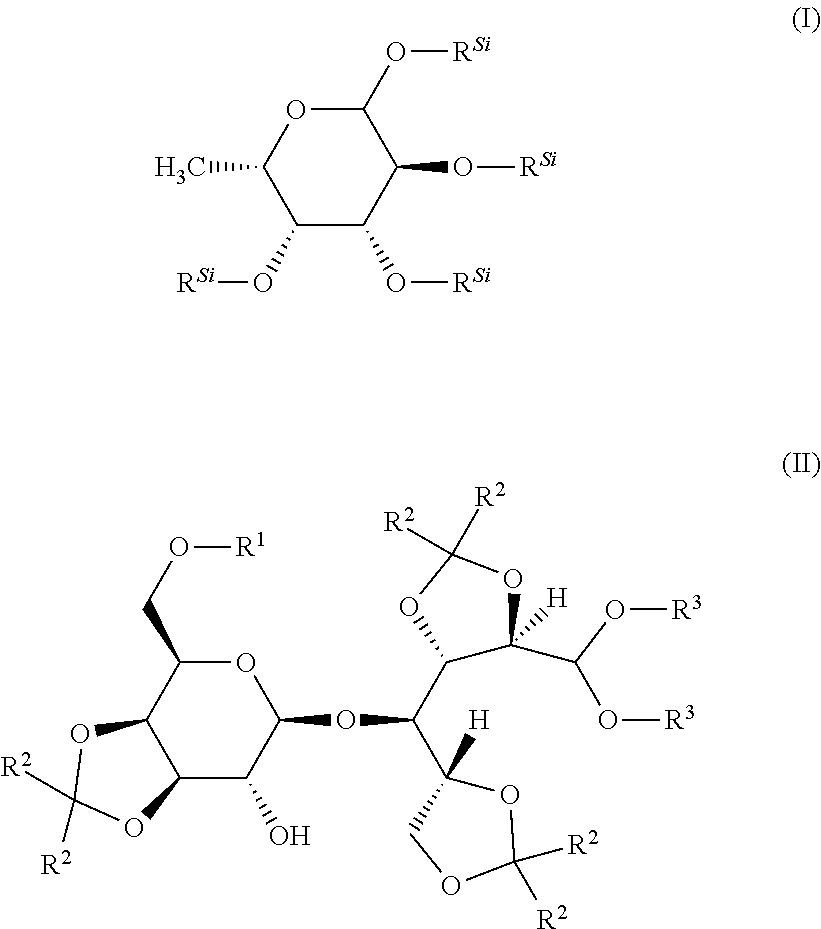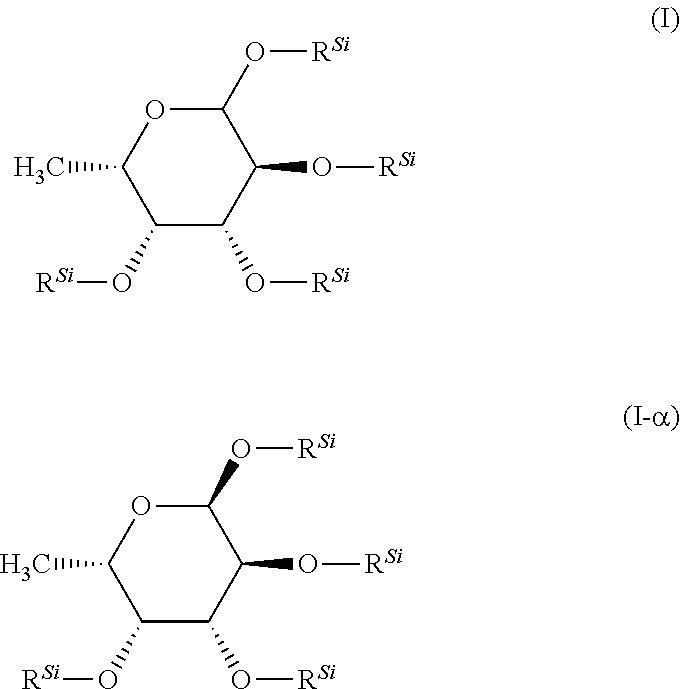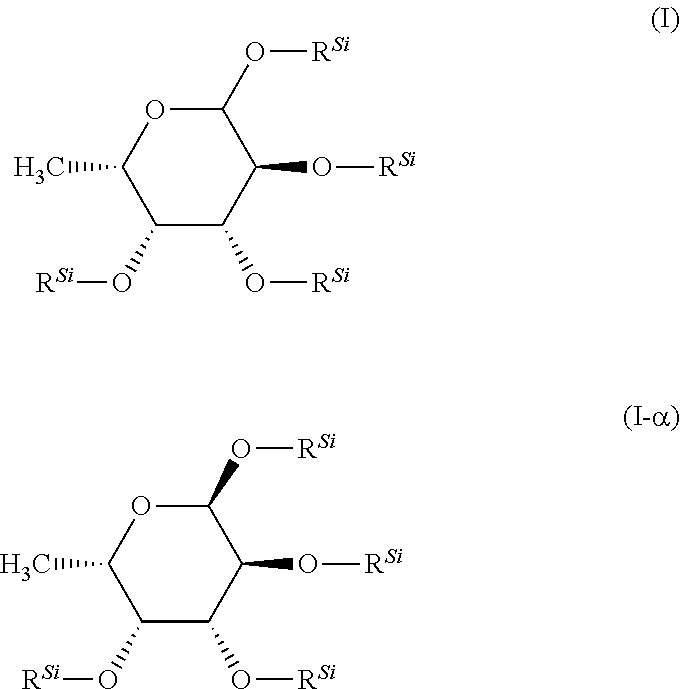Method for preparing 2'-o-fucosyllactose
- Summary
- Abstract
- Description
- Claims
- Application Information
AI Technical Summary
Benefits of technology
Problems solved by technology
Method used
Image
Examples
preparation example 1
istrimethylsilylfucose
[0183]2.5 g (15.1 mmol) of fucose were charged in 75 mL of DCM (0.2M solution). To this were added 6.78 g (4.4 eq.) of triethylamine and the mixture was cooled to 0° C. 7.35 g (4.4 eq.) of chlorotrimethylsilane were then added slowly dropwise at 0° C. and the reaction mixture was stirred for 1 h at 00° C. The mixture was allowed to warm to RT and, after a further 16 h at RT, 75 mL of pentane were added, the mixture was briefly stirred and then added to 100 mL of ice-water. After phase separation, the aqueous phase was reextracted three times with pentane, and the combined organic phases were washed successively twice with water and three times with NaCl solution. The organic phase was dried with Na2SO4, filtered and concentrated to dryness under reduced pressure. Yield: 6.6 g (97% of th.)
[0184]1H-NMR (CD2Cl2): δ 5.0 (d, 1H), 4.0 (mc, 1H), 3.8, (m, 2H), 1.05 (d, 3H), 0.2-0.1 (4 s, 36H)
preparation example 2
istrimethylsilylfucose
[0185]In a manner analogous to preparation example 1, 34.9 g of the title compound are obtained by the method described above from 13 g of fucose in 386 mL of DMF with 38.2 g of TMSCl and 35.3 g of NEt3.
Preparation Example 3: Preparation of 4-O-(3,4-isopropylidene-β-D-galactopyranosyl)-2,3; 5,6-bis-O-isopropylidene-D-glucose dimethyl acetal (Compound II-1: Compound of the Formula (II) where R1═H, R2═CH3 and R3═CH3)
[0186]205.4 g (0.6 mol) of lactose were charged in 409 mL of 1,4-dioxane. To this were added 28.44 g (0.12 mol=0.2 eq.) of DL-camphorsulfonic acid and 376.4 mL (3 mol=5 eq.) of dimethoxypropane. The mixture was heated under reflux for 4 h. 10.04 mL of triethylamine were then added. After cooling, the mixture was concentrated under reduced pressure (2 mbar) and 50° C., during which two times 300 mL of toluene each time were added and codistilled. The residue that remained was taken up in 1000 mL of methanol / water 9:1 v / v and stirred at 60° C. for 1 h. ...
example 7
on of 2′-O-fucosyllactose
[0209]0.3 g of compound IIIc from example 5 in 3 mL of MeOH was stirred with 0.3 mL of water and 2.3 eq. of K2CO3 at RT for 16 h. The HPLC chromatogram shows 98% of the compound IIIb where R2═R3═CH3 and R4═H, which was identified by its retention time Rt=3.46 min. and by spiking with a sample from example 6. To this were then added 9 g of a 60% by weight aqueous acetic acid solution and the mixture was stirred at 60° C. for 23 h, until complete conversion had been achieved according to HPLC.
[0210]After evaporation of the reaction mixture and filtration of the residue on silica gel with chloroform / methanol 8 / 2, 54 mg of 2′-O-fucosyllactose were obtained, which was identified by its retention time in the HPLC (Rt=8.16 min.) and by comparison with commercially available 2′-O-fucosyllactose.
[0211]13C as mixture of the anomeric α-isomers
[0212]Isomer I 13C NMR (D2O, 500 MHz): δ(ppm) 103.08, 102.17, 98.75, 79.11, 78.57, 78.16, 78.07, 77.15, 76.76, 76.44, 74.51, 72....
PUM
| Property | Measurement | Unit |
|---|---|---|
| Percent by mass | aaaaa | aaaaa |
| Weight | aaaaa | aaaaa |
Abstract
Description
Claims
Application Information
 Login to View More
Login to View More - R&D Engineer
- R&D Manager
- IP Professional
- Industry Leading Data Capabilities
- Powerful AI technology
- Patent DNA Extraction
Browse by: Latest US Patents, China's latest patents, Technical Efficacy Thesaurus, Application Domain, Technology Topic, Popular Technical Reports.
© 2024 PatSnap. All rights reserved.Legal|Privacy policy|Modern Slavery Act Transparency Statement|Sitemap|About US| Contact US: help@patsnap.com










